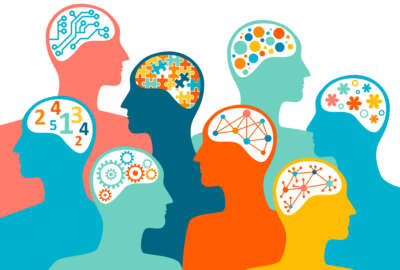Spy agencies seek better raw data on diversity challenges
The chief of diversity, equity, inclusion and accessibility for the intelligence community is focused on hard data and changing culture.
The intelligence community’s diversity challenges are both readily apparent and frustratingly opaque.
Intelligence agencies continue to lag behind the broader federal workforce across a range of workforce benchmarks for women, minorities and persons with disabilities. But for a community laser-focused on collecting raw data to analyze a range of global issues, intelligence agencies and components are disjointed, inconsistent and deficient, in some cases, when it comes to data on diversity, equity, inclusion and accessibility.
Stephanie La Rue, the first-ever chief of DEI&A for the intelligence community, is attempting to take on those challenges from her perch in the Office of the Director of National Intelligence. She reports directly to Director of National Intelligence Avril Haines.
La Rue was previously chief diversity strategist for the Central Intelligence Agency. She also spent time in the CIA’s Office of General Counsel.
“The way I view it is to be kind of the strategic implementer and integrator of DEI&A across the intelligence community,” La Rue said on Inside the IC. “So we are making sure that all of our diversity and inclusion and accessibility strategic plans are completed and that we’re in lockstep with one another. It’s hard to do because everybody does things a little bit differently, but that’s generally the mission of my office.”
The fiscal 2021 demographic report for the intelligence community released in October shows some marginal year-over-year gains have continued. The number of IC officers who identify as minorities increased 0.6 percentage points to 27.6%, while those who identify as women increased 0.3 percentage points to 39.5%.
Both figures fall short of the federal workforce benchmarks of 38.6% minority employee composition and 44.2% for women employees, respectively. And the latest numbers show intelligence agencies continue to struggle to promote and retain minorities and women.
“My voice track for the [annual demographic report] is we are not where we need to be, but we know where we need to go,” La Rue said. “And we’re working to get there.”
Meanwhile, the intelligence community experienced an apparent decline in the percentage of persons with disabilities in the civilian workforce, dropping from 11.9% to 10.9% in fiscal 2021. The federal goal set by the Equal Employment Opportunity Commission for persons with disabilities is 12%.
But the report attributes the latest drop-off to “methodological changes in PWD reporting across the IC.” La Rue said the IC changed how it collected data for PWD by creating additional fields and categories in fiscal 2021, potentially leading to the drop-off.
She said she’s optimistic the intelligence community can reach the 12% target in the near term. ODNI now has a senior accessibility officer to oversee efforts across the different components.
Data is the ‘bread and butter’
La Rue said her office is focused on four primary areas: data, partnerships, education and accessibility.
Each area is important, she said, but the “bread and butter” for her is data collection, an area La Rue sees as ripe for improvement.
La Rue said there are numerous gaps she wants to address. Most elements don’t collect or report data on the veteran status of their employees, for instance, despite being a “huge part of the workforce with distinct needs,” La Rue said.
They also don’t collect or report data on sexual orientation and gender identity, an area where La Rue acknowledged there may be a lack of “trust” considering past policies that effectively barred members of the LGBTQ+ community from serving in the intelligence community.
Even for data that is reported in the annual demographic report, there are inconsistencies and gaps. Some components didn’t report data on the race of their applicants in fiscal 2021, for example, hobbling efforts to evaluate the effectiveness of minority recruitment programs.
The data problems stem from decentralized human resources systems used across the 18 intelligence agencies and components.
“Everybody collects data in their own HR database, and they report it their own way, and so we have to streamline that,” La Rue said. “We’re really trying to clean all of that up.”
The fiscal 2021 report notes that the intelligence community relies on “self-reported aggregated data rather than raw data sources, which inhibits the IC’s ability to perform analysis across demographic groups, commonly known as intersectional data analysis.”
The ability to perform such intersectional analysis — being able to evaluate the representation of black women or Latinos with a disability, for instance — is the “exciting” future La Rue envisions for DEI&A efforts across the intelligence community.
“If you were looking at our numbers for women who are in the senior ranks, the number looks pretty good in comparison to their composition,” La Rue said. “But that’s not true for black women in the IC. That’s not true for trans women. That’s not true for women with disabilities. And so until we can really parse that number out a little bit more, we’re not really going to be able to get to what it is that we need to start doing, where we need to start programming, dedicating resources.”
The demographic report notes DEI&A data modernization efforts will involve “leveraging a cloud service” through which “data will be ingested, validated, analyzed and reported through repeatable, automated processes.”
“Future data will provide anonymized individual-level data that will permit analysis that is more intersectional,” the report states. “These efforts seek to create a unified set of data fields and improve future demographic reports.”
Culture the ‘biggest issue’
While the data challenges are a high priority, La Rue said culture is a major barrier to DEI&A initiatives across the intelligence community as well.
“I think the biggest issue that we are seeing is our culture,” she said. “You have some elements that are throwing all kinds of money and resources and massive teams behind this … but culture eats strategy for lunch every single day. And so what I’m seeing is whether or not you have an element that’s very poorly resourced, or an element that’s resourced really well, we’re still struggling with that culture.”
She said education will help address that issue. But a major challenge remains convincing people of the necessity of DEI&A efforts.
“There is also still a lot of opposition,” La Rue said. “Some people just don’t get that this is mission.”
Haines and other leaders have spoken about the imperative to increase diversity across intelligence agencies. La Rue said explaining how DEI&A plays a role in different aspects of their day-to-day jobs and operations can be an effective way to sway managers and other officials in the position to make a difference.
“It’s not just cultural events. It’s not a food tasting,” La Rue said. “It is how you’re weaving this into everything you do. And that having that conversation with folks has been much more helpful in getting people to really understand how they can operationalize this and execute this in their nine-to-five.”
Copyright © 2025 Federal News Network. All rights reserved. This website is not intended for users located within the European Economic Area.
Follow @jdoubledayWFED
Related Stories





